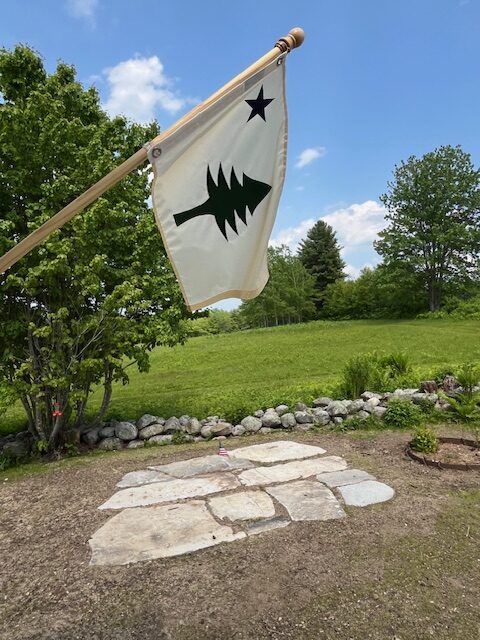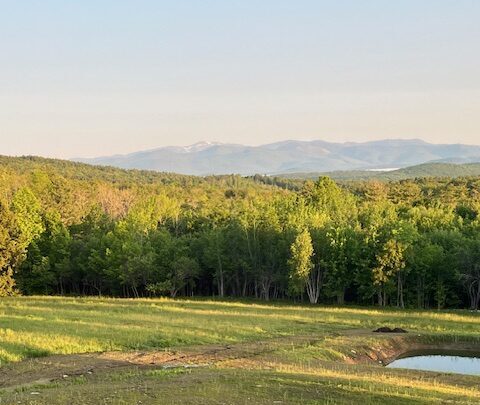
In the 18th century, before Sweden’s first settler Samuel Nevers ventured north, this land was completely forested. Bears, deer, fox, wolves, coyotes, woodchucks, porcupines, fishers and wolverines shared the woods with a plethora of insects, amphibians and birds. The only human in habitants were the Pequawket (aka Pigwacket) people who used the area as a hunting ground.
On this land that we now steward, Col. Nevers cut trees to build a log cabin; his old cellar hole is still extant with one granite wall still standing. He cleared the forest to create pasture and crop land, removing the stumps and moving rocks and boulders into stone walls that marked the fields’ boundaries. Over the past 225 years his clearing has been used to graze horses and cattle, and to grow hay, vegetables and wild blueberries. But the forest has not forgotten it used to be here; it has overtaken two of our four fields and the meadows are dotted with ash, birch, beech and poplar seedlings, ready to take up residence again!
While the construction crew was renovating the Red House, Nils and I concentrated our efforts on the perimeter of the fields, eliminating invasive bittersweet from the forest edge, cutting back saplings and ultimately hiring a forestry mulcher to reclaim the 15 feet of territory around the second field.
The house project was completed last fall and an early snowfall curtailed any landscaping apart from a quick hydro-seeding on the bare ground around the construction site. Spring has now sprung, but the grass was struggling in the thin layer of screened loam. In May, we sourced composted manure from a local farm and ordered a truckload of “super soil.” Nils built a three bay composting station so we can continue to enhance our gardens.
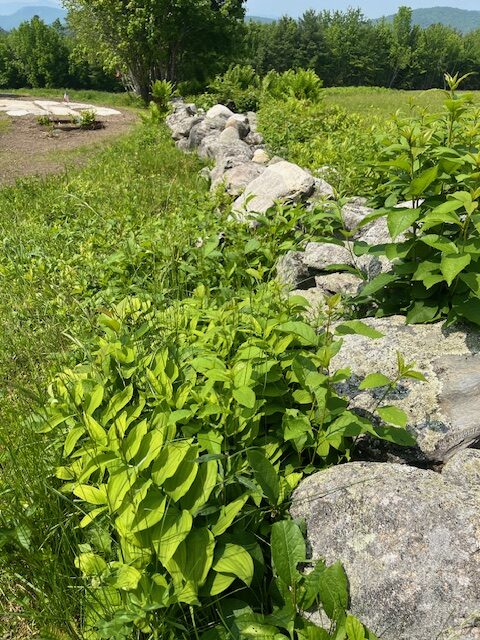
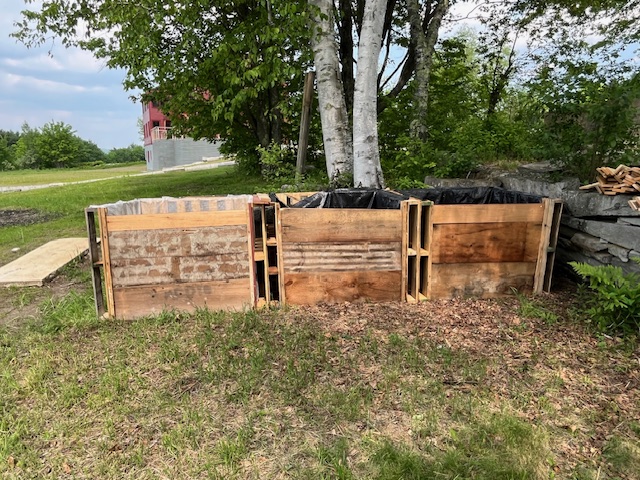
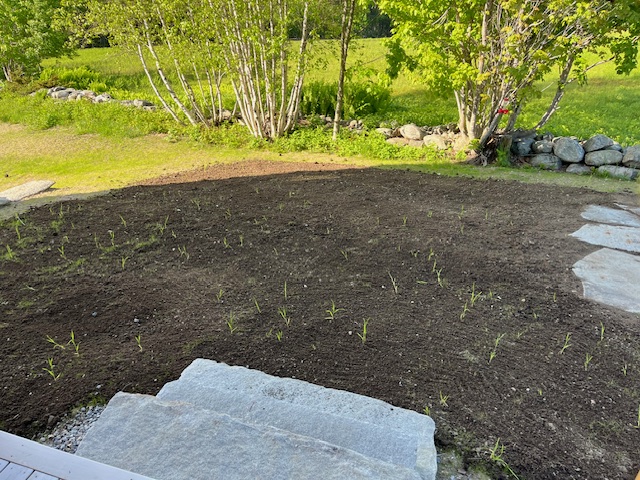
Nils helped me fill the raised beds for planting vegetables. We shoveled and spread soil on the bright green peach fuzz of our front yard. He carted wheelbarrows of manure for me to dig into the many small gardens his mother, Carol, had created, and helped make a new bed into which to transplant the perennials we saved from the house in its former location. These are the “heirlooms” we inherited from her: peonies, thistle, cranberry viburnums, hostas, day lilies, Shasta daisies, sedum, tansy, climbing hydrangea, weigela, lilacs and some plants I have yet to identify!

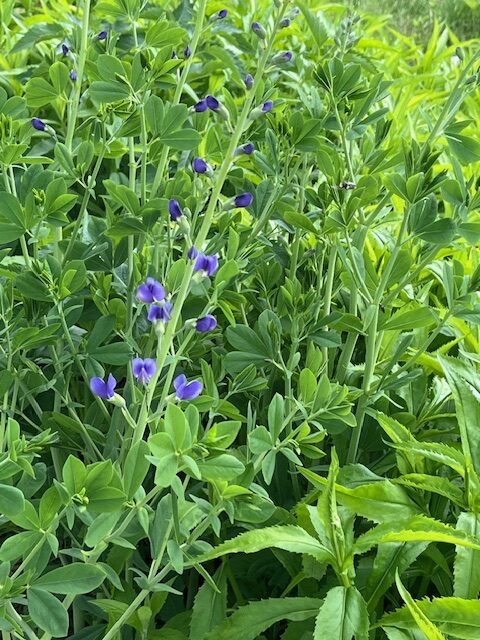

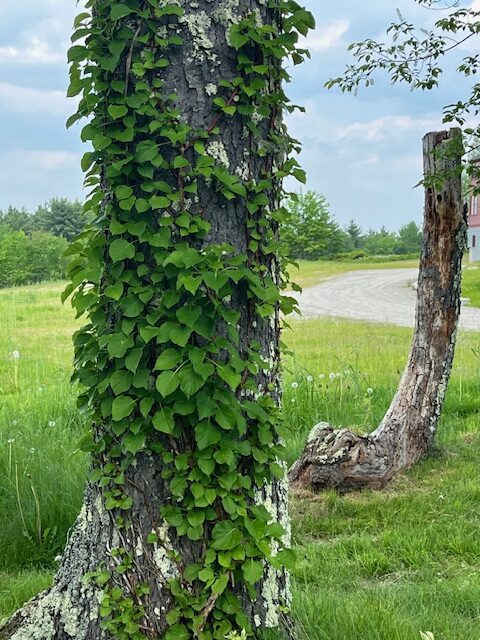
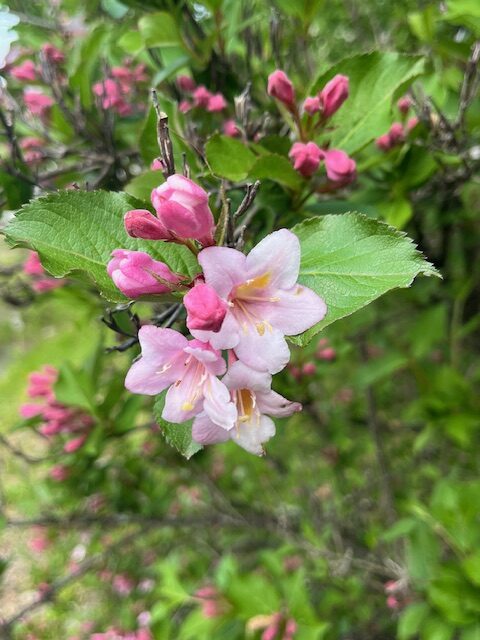
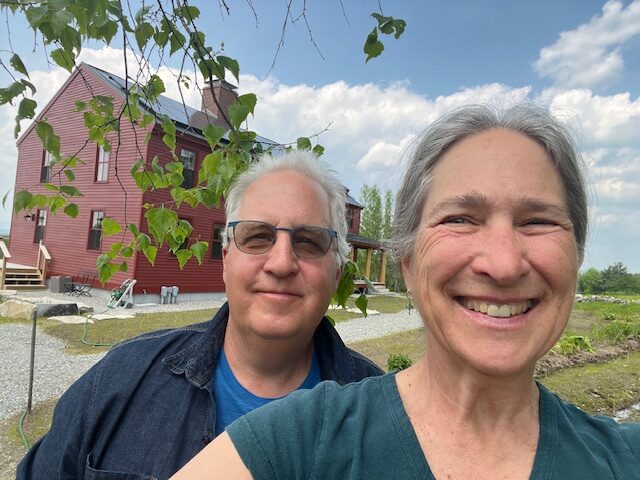
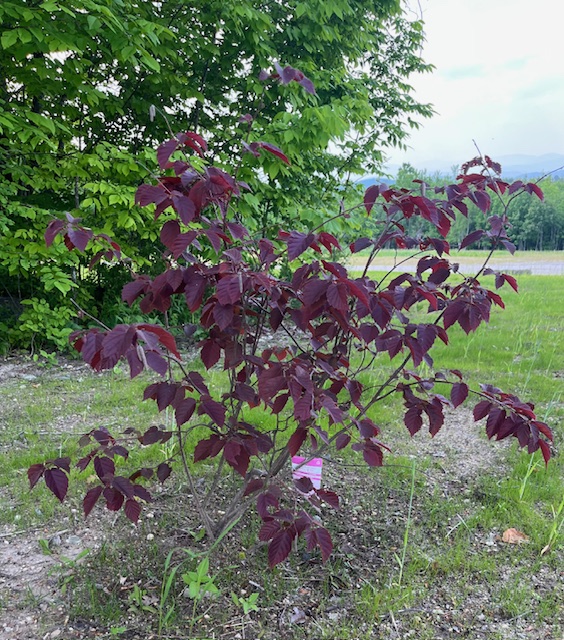
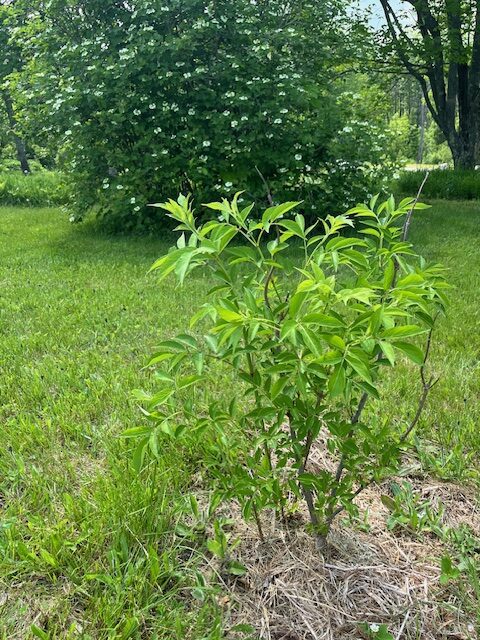
In addition, we’ve chosen to add a number of native plants purchased from the Oxford Soil and Water Conservation District, curated by ecologist Deb Perkins who advised us on what species support birds, bees, butterflies and other pollinators. These include shrubs and ground covers as well as flowering plants. Here’s a sampling: Joe Pye weed, buttonbush, witch hazel, high bush blueberries, hazelnut, Jacob’s ladder, wooly thyme, clethra, shadbush, elderberry, white oak, swamp azalea, black willow, sweet gale, and American chestnut trees.
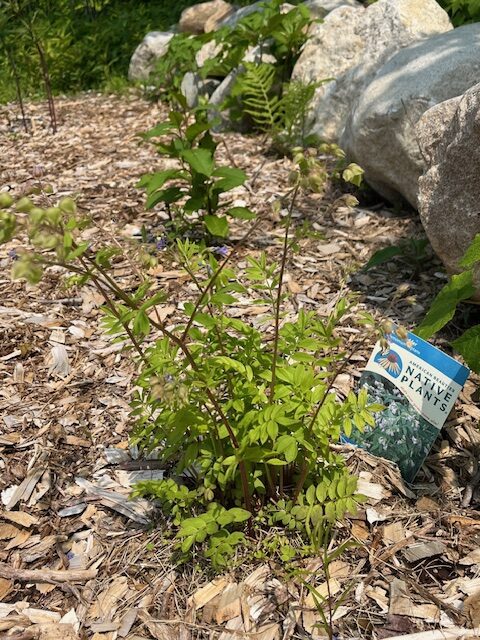
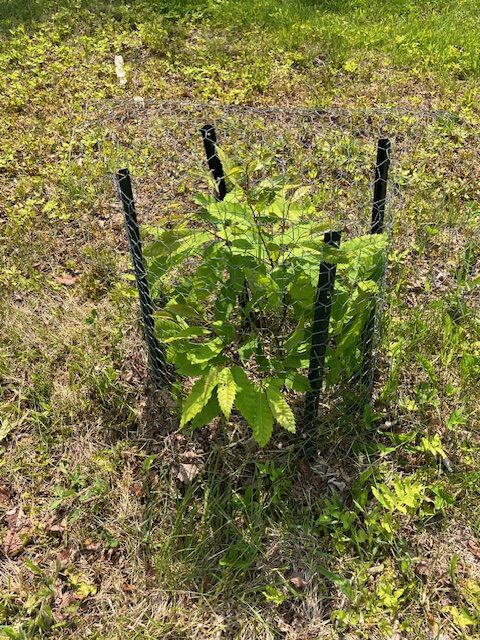

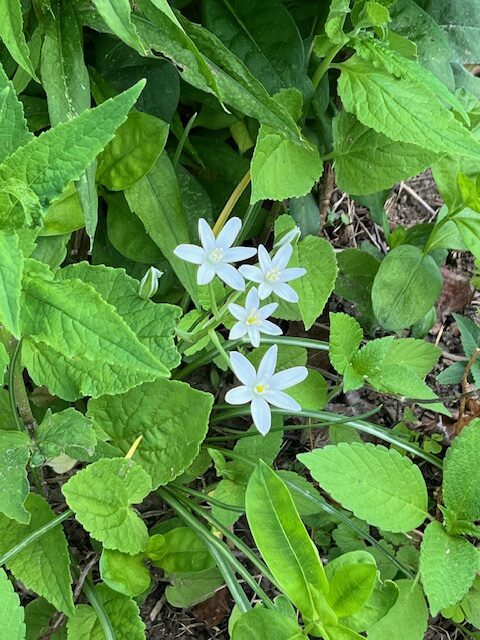
Happy June! We’re celebrating Flag Day with this 1901 design of the Maine standard.
